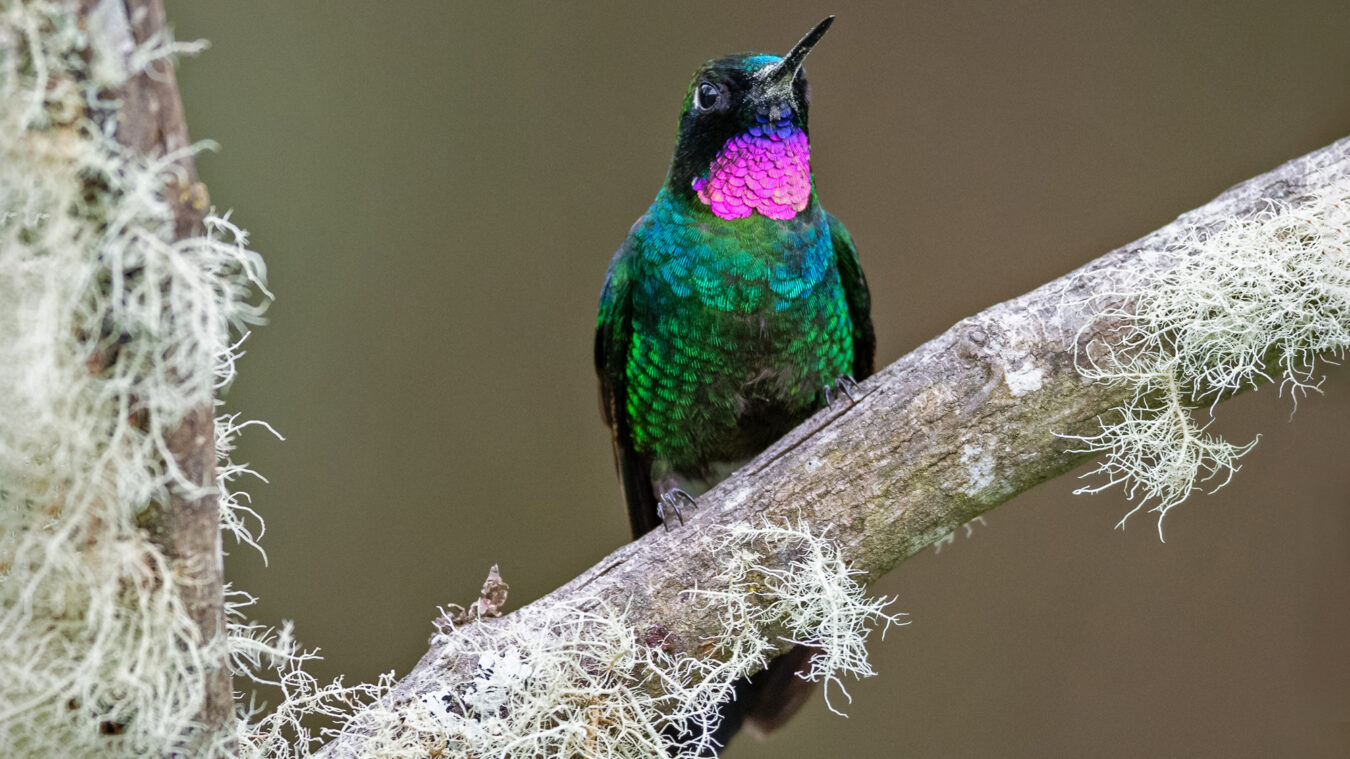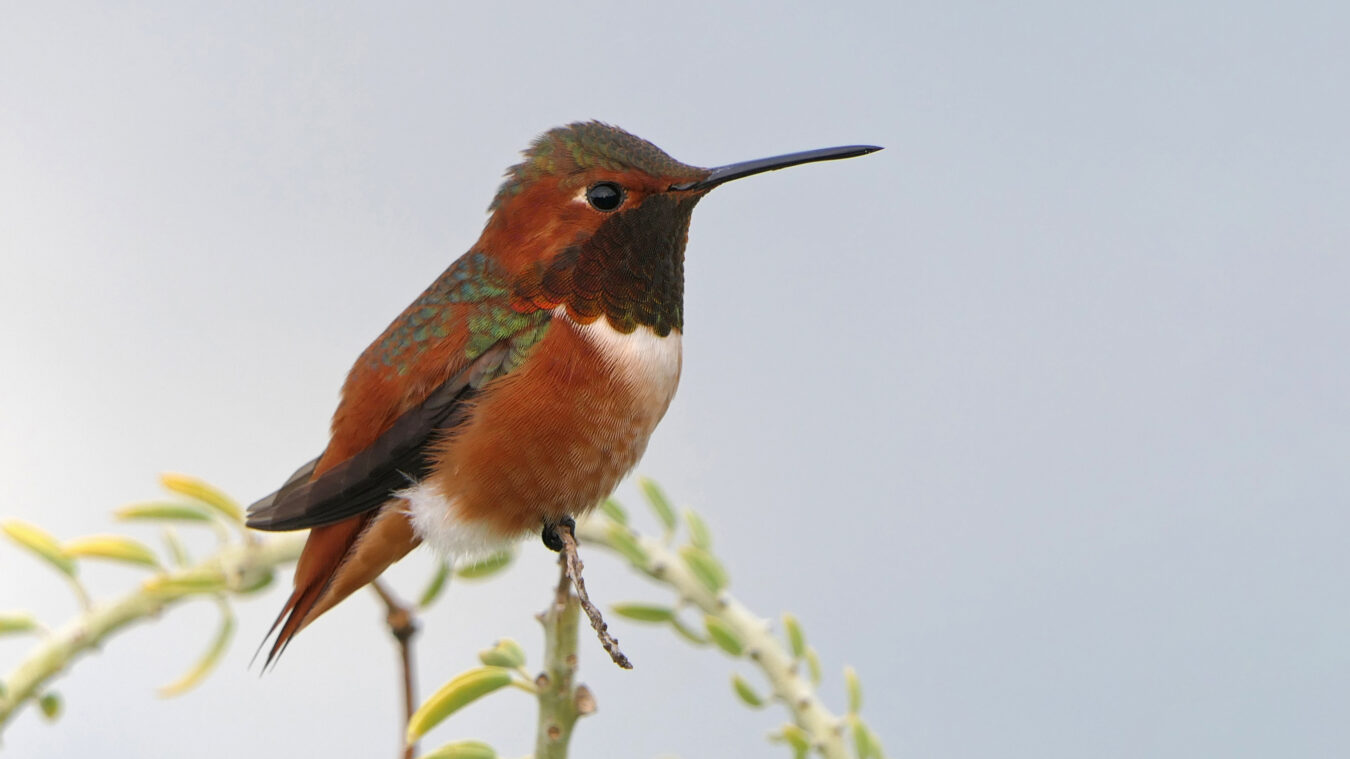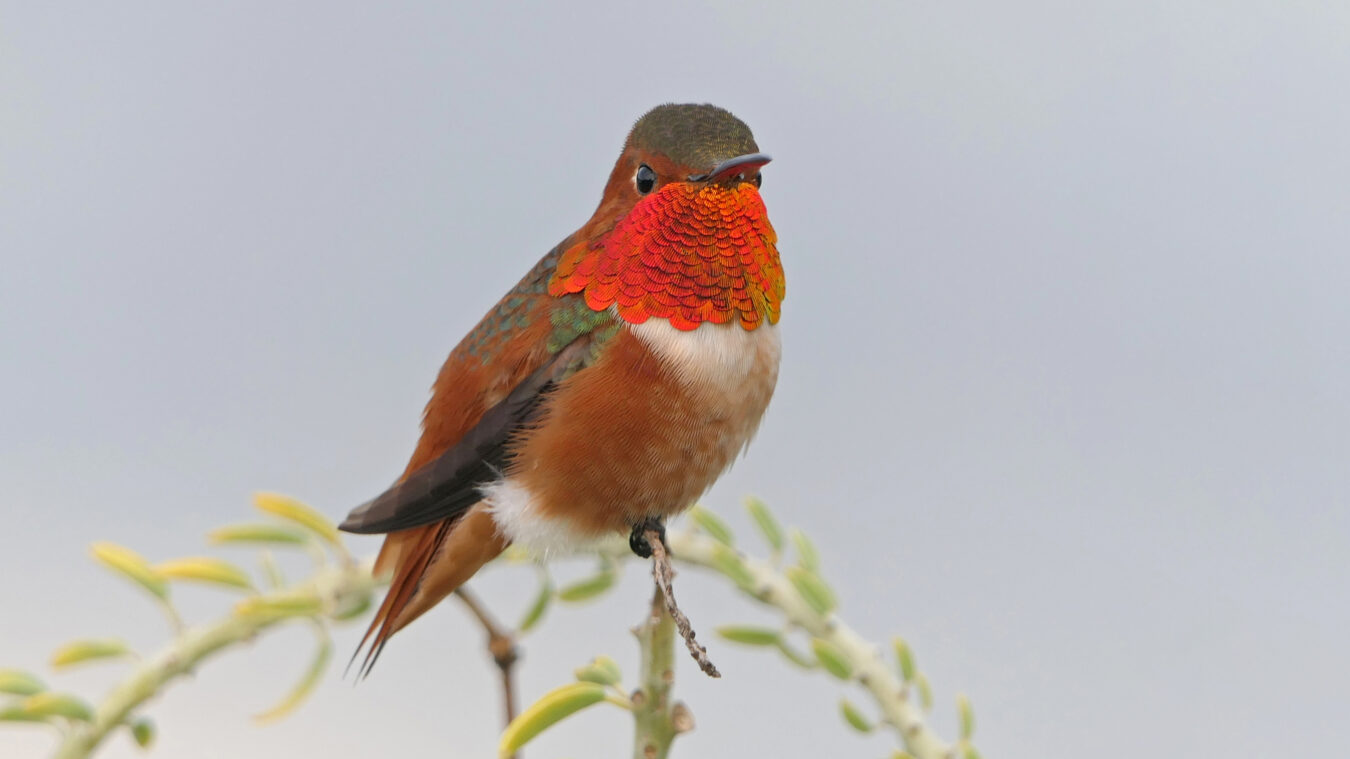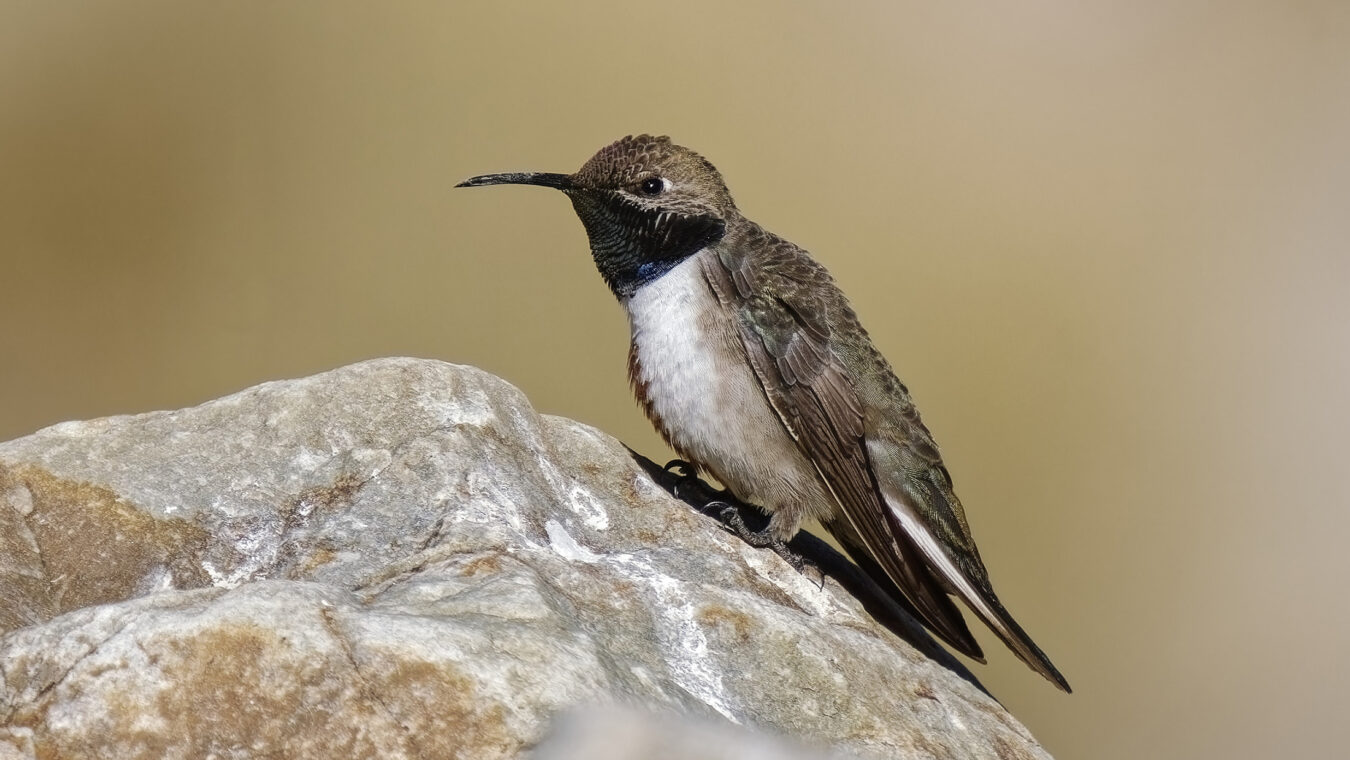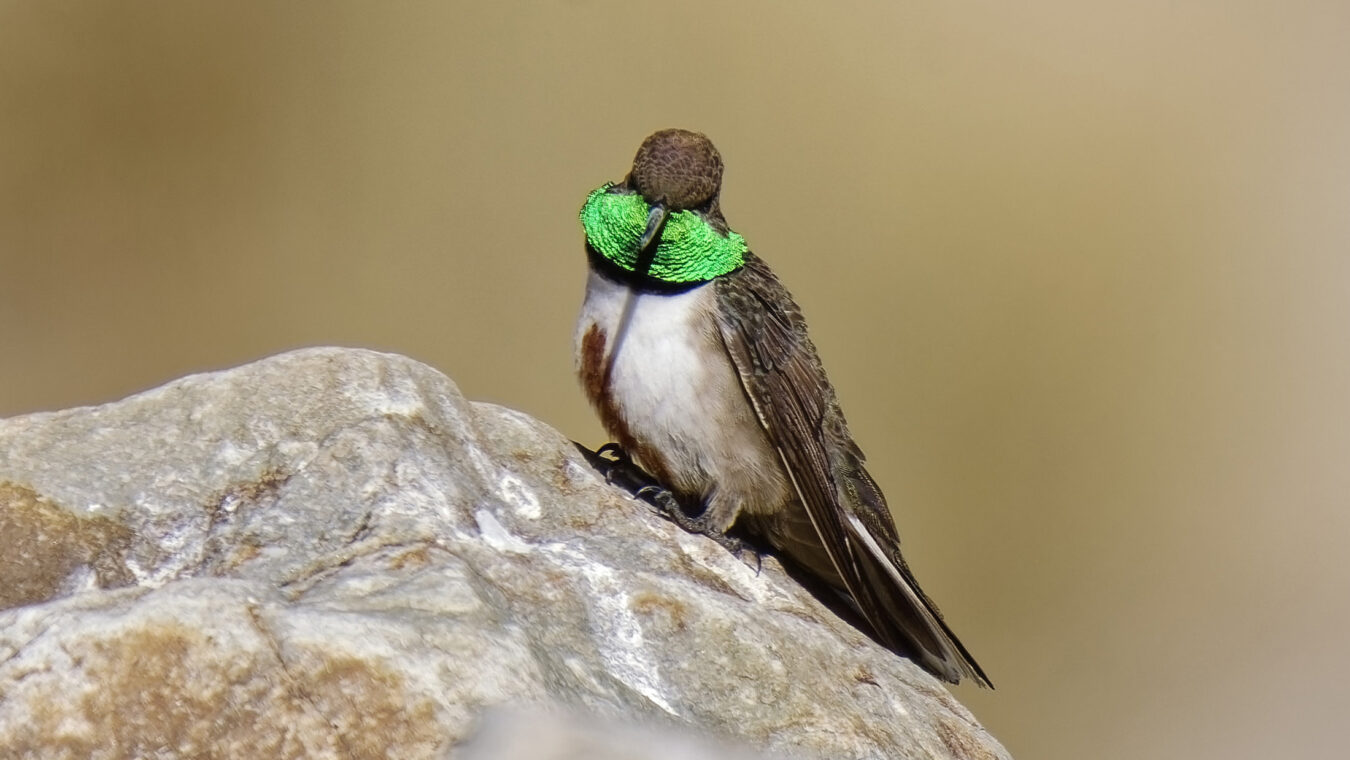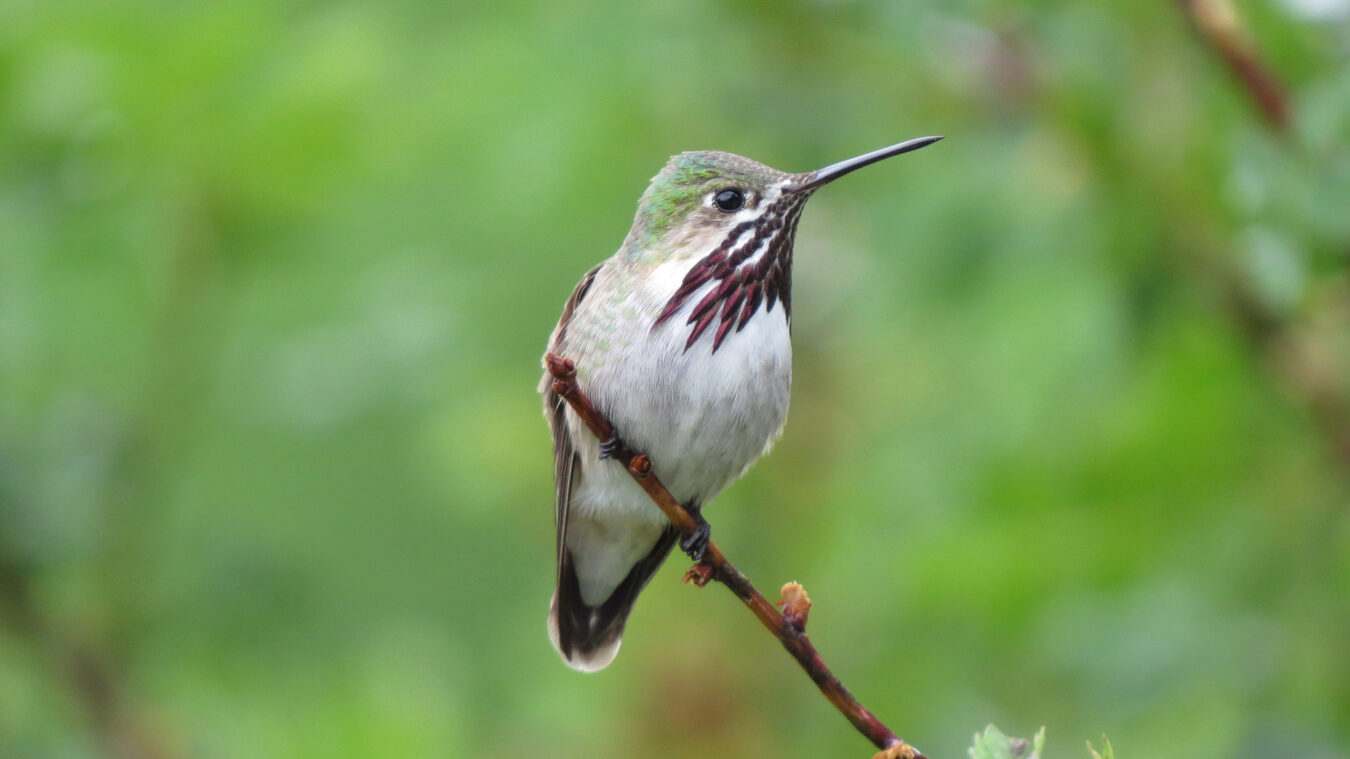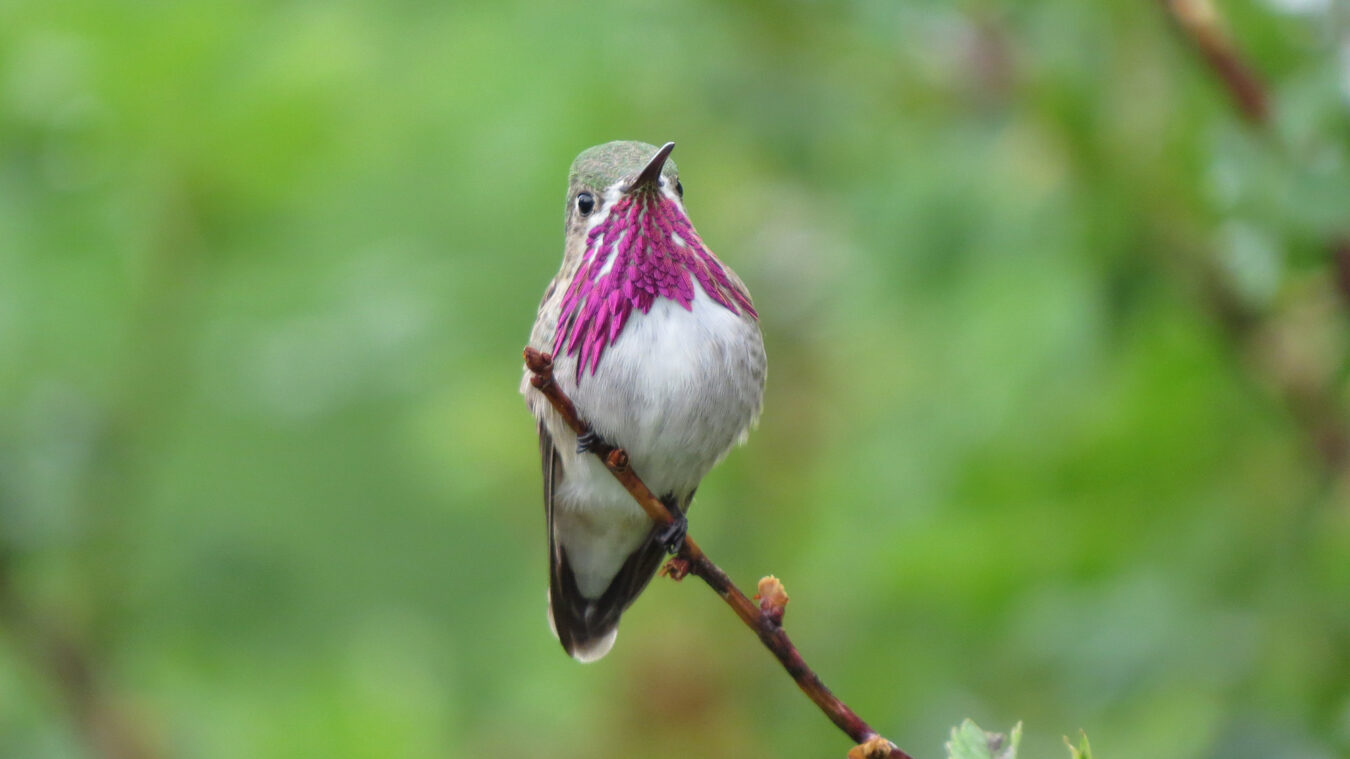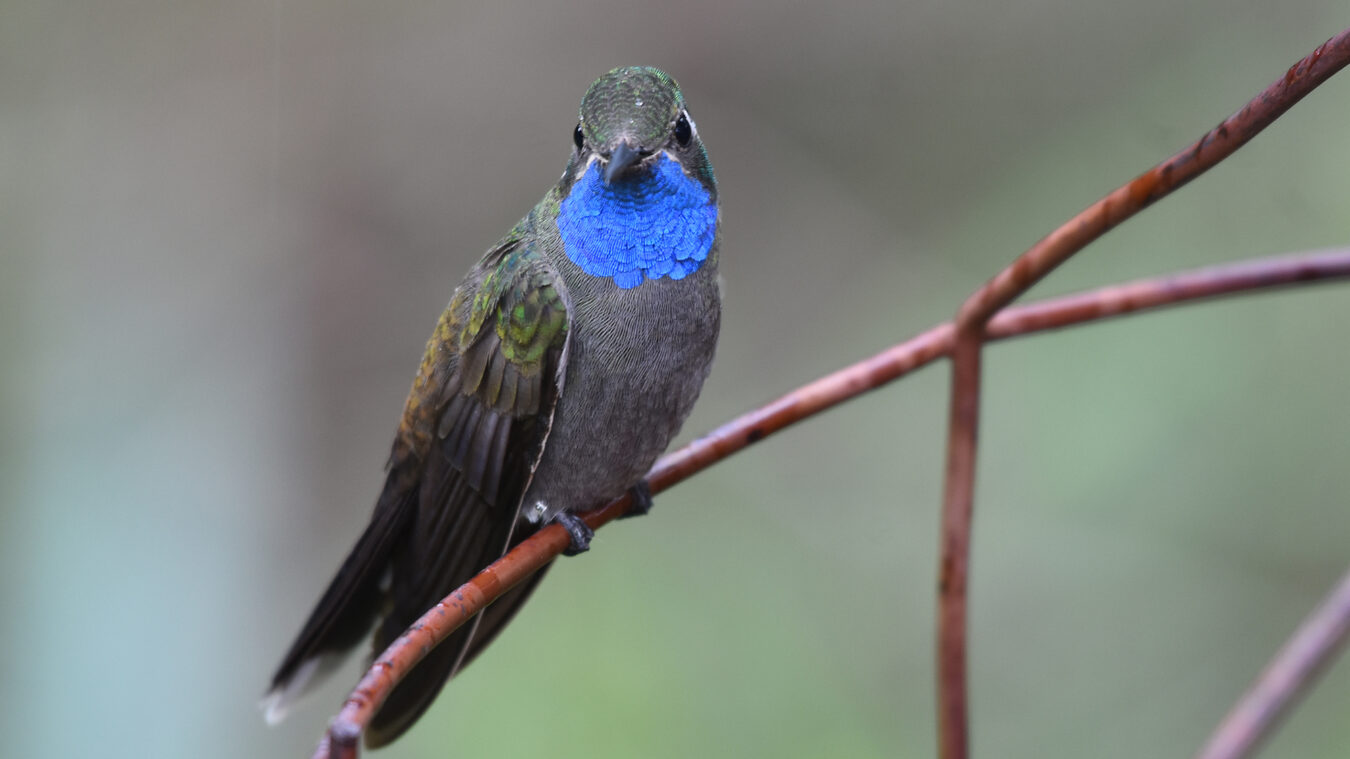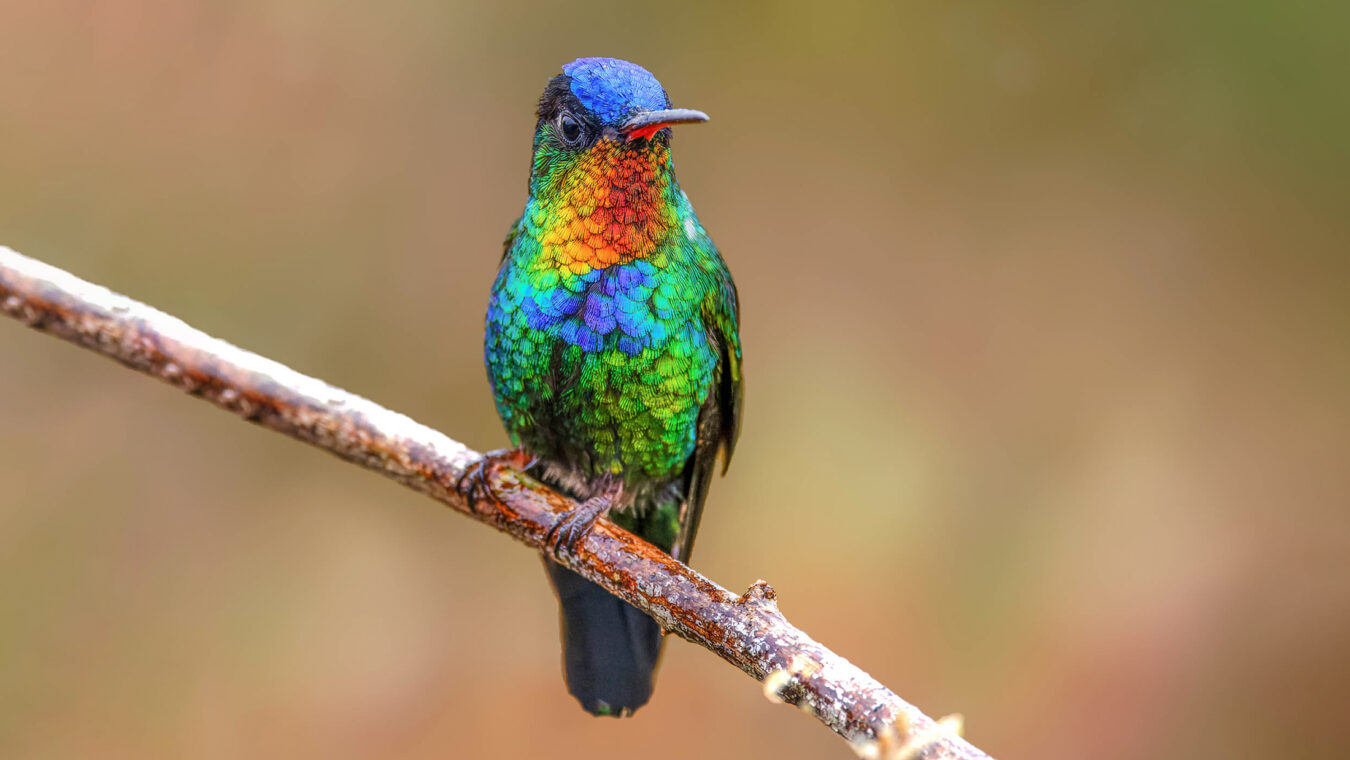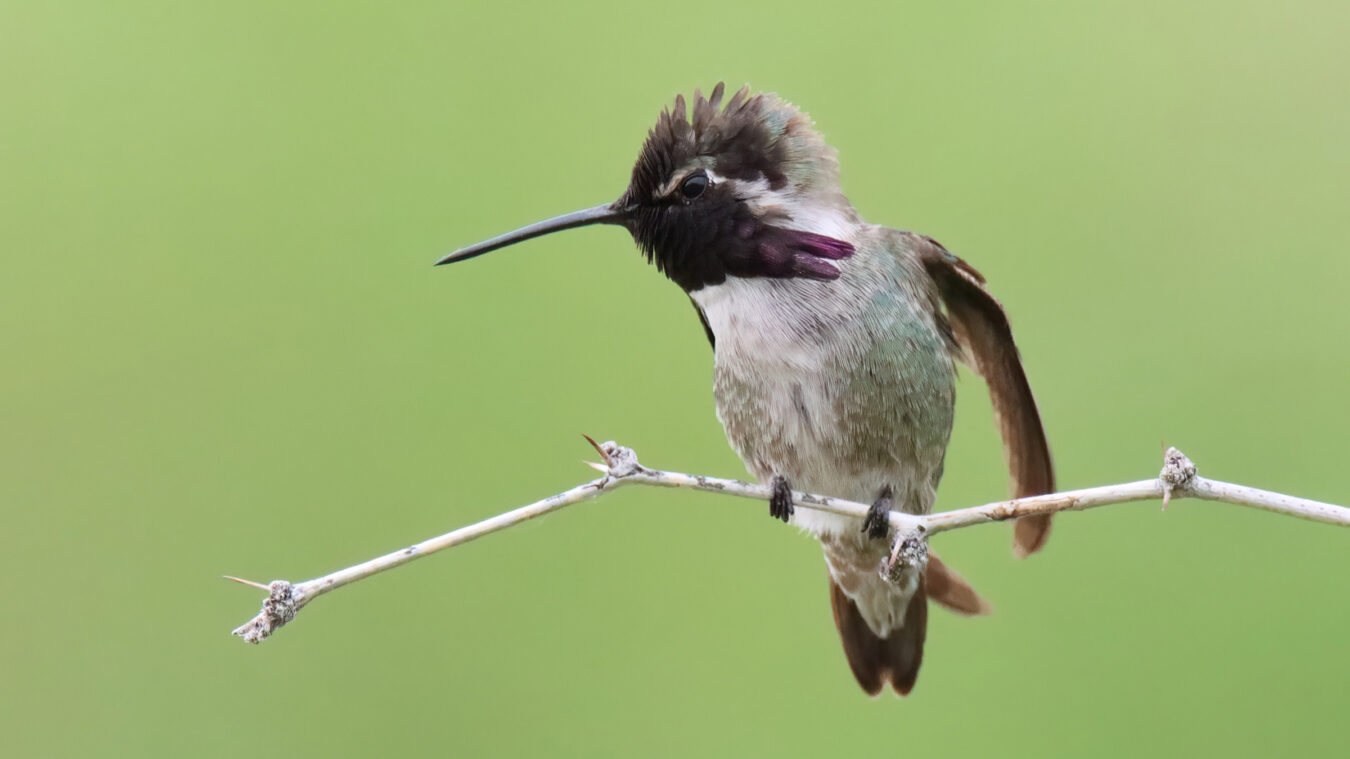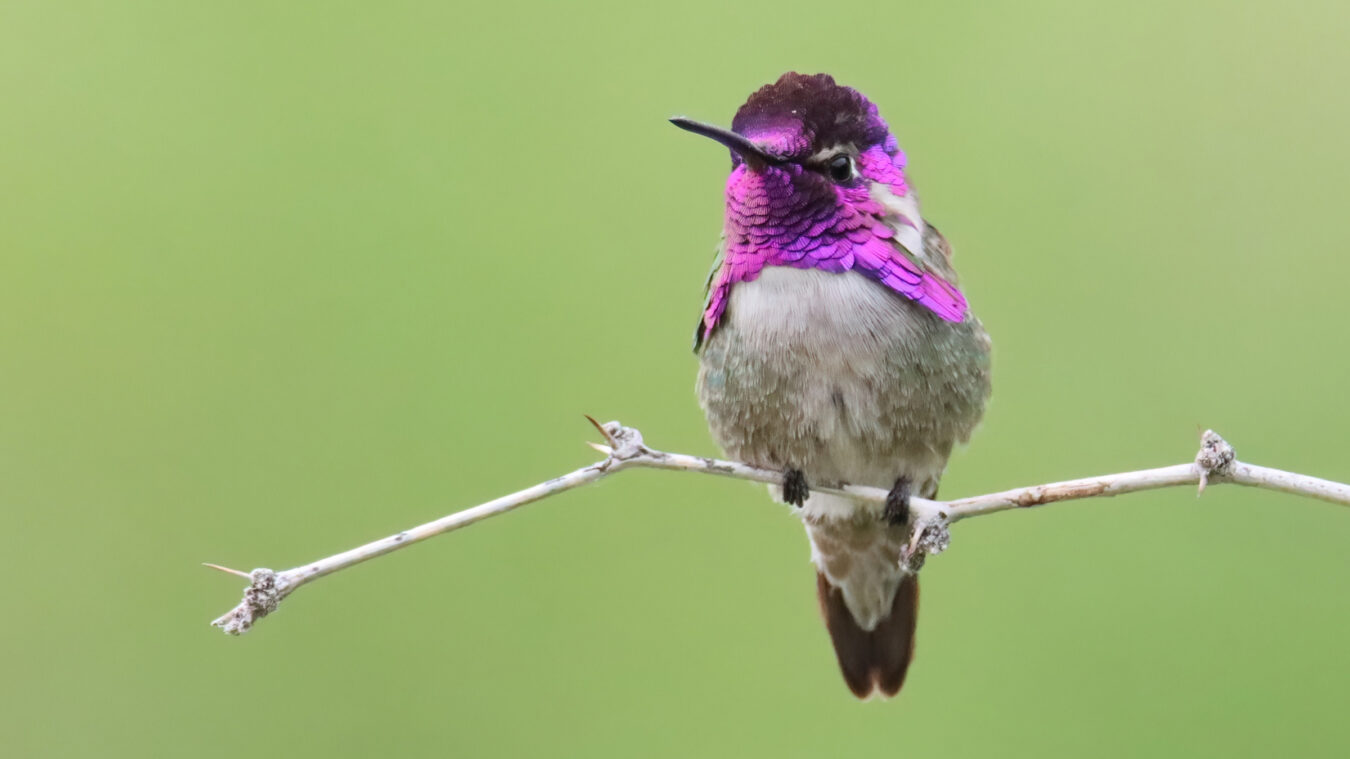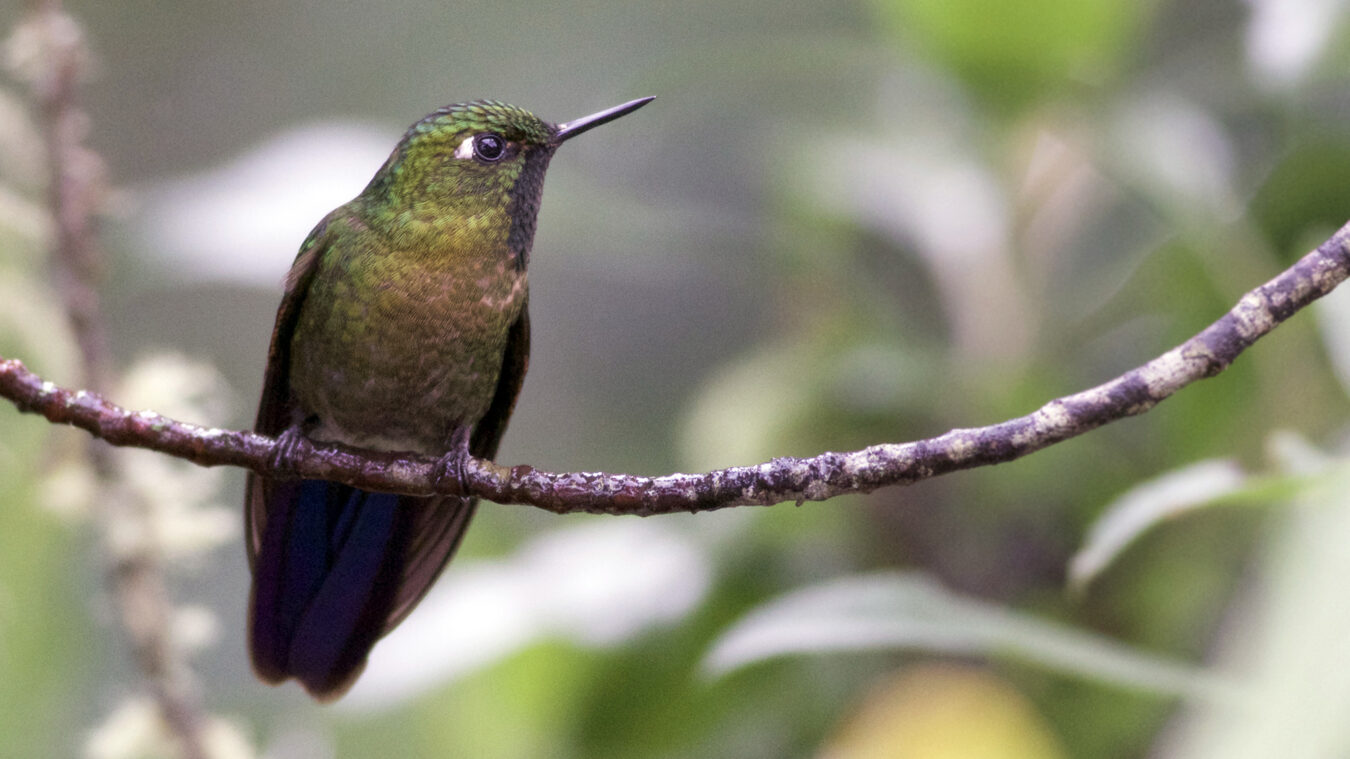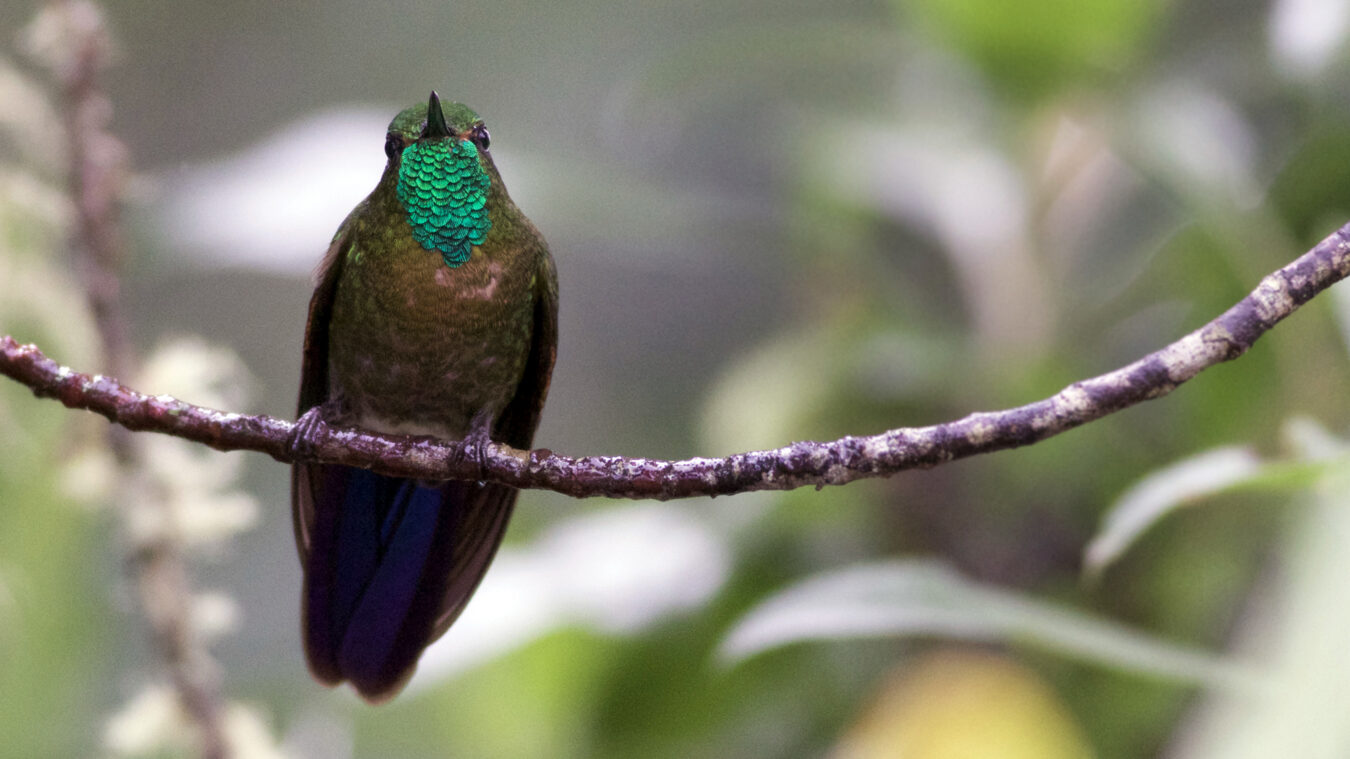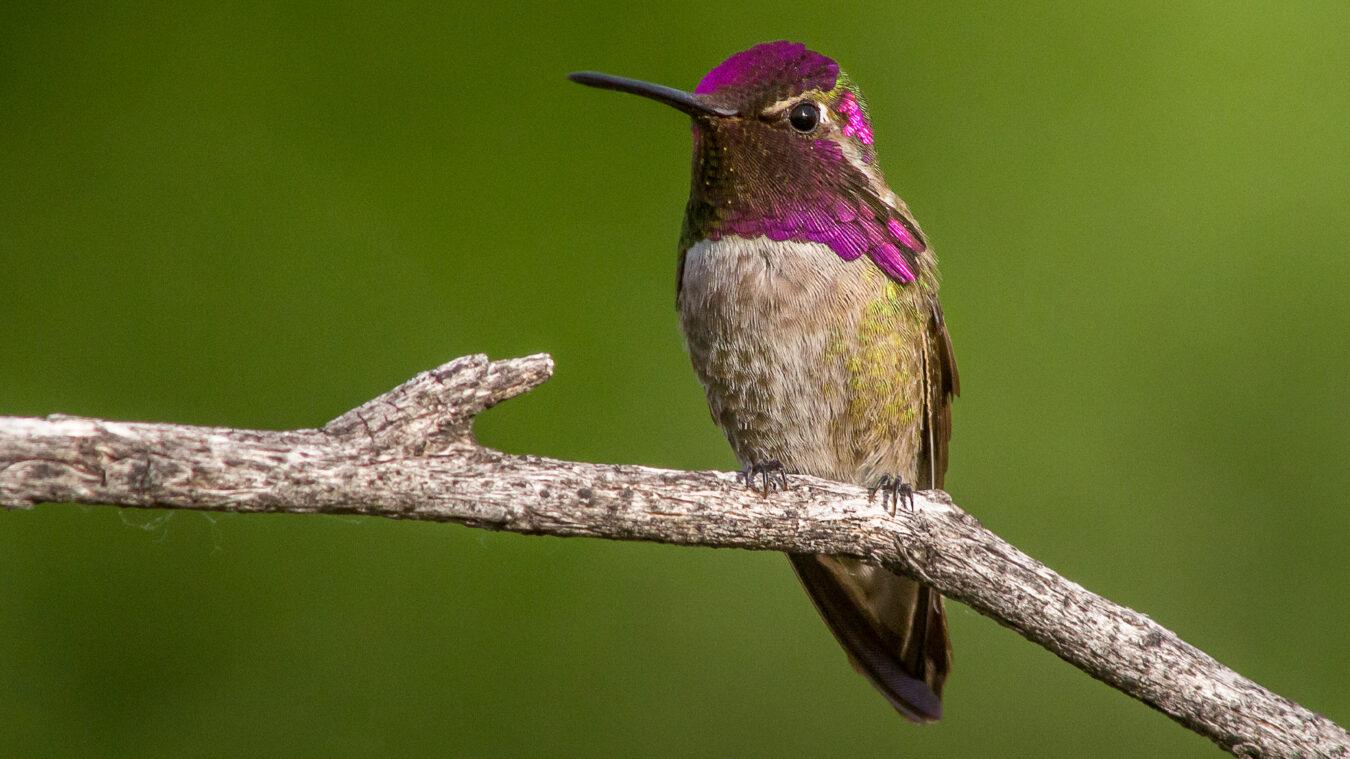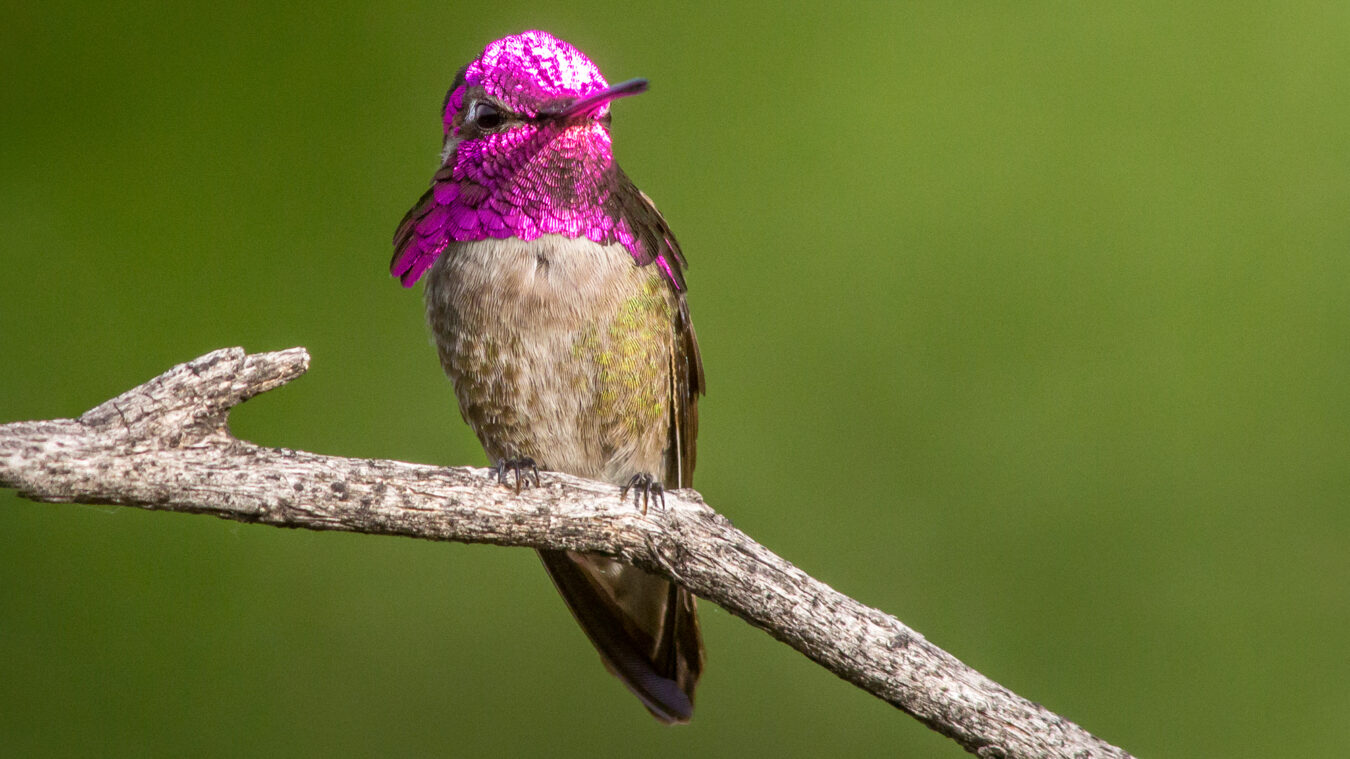Free Preview: The Wonderful World of Hummingbirds
Enjoy this preview of content from the self-paced online course The Wonderful World of Hummingbirds.
From Lesson 1: What Makes a Hummingbird a Hummingbird
You probably know a hummingbird when you see one, but what sets them apart from other birds?
There are over 360 species of hummingbirds in the world, and all of them live in the Western Hemisphere. That means, if you see a small, shiny bird drinking from flowers in Africa, or Australia, or Eurasia, it’s definitely not a hummingbird. There are other birds that might look a little bit like a hummingbird, but these are other types of birds like honeyeaters, or sunbirds. Many of these birds also eat nectar, so you might really be fooled. But even though they have similar lifestyles, they are not hummingbirds.
Here in the eastern United States and Canada, there’s just one species, the Ruby-throated Hummingbird. The male and female do look different from one another, but that’s the only variation we get here. In the western United States and Canada, and down into Texas and Arizona, it gets a bit more interesting, with a dozen species. But still, the vast majority of species are in Central and South America. The diversity of hummingbirds there is spectacular, with some places being home to dozens of different species.
But no matter the species, they all have a few things in common. All hummingbirds get most of their calories from sugar, specifically from the nectar of flowers. We’ll talk more about other parts of their diet later in the course, but every species of hummingbird makes its living by eating nectar.
Because hummingbirds are so dependent on nectar, and nectar supplies take time to replenish, many hummingbirds are quite territorial. If you’ve ever watched hummingbirds at a feeder, I bet you’ve noticed they can be pretty aggressive towards one another. Although they’re small, hummingbirds can be quite fierce.
To defend and reach their food, hummingbirds have some pretty amazing flight maneuvers. They usually hover as they feed, beating their wings around 50 times per second to stay aloft. Powering this fast flapping is an incredible circulatory system, with a heart that beats 1200 times a minute, twenty times faster than our own hearts. To save energy, they spend their nights in torpor, a hibernation-like state where the hummingbird’s whole metabolism slows down. They also spend a large portion of their day perching. Even though we typically think of them zipping around in flight, most of their time is spent resting.
One thing you’re very unlikely to see a hummingbird doing is any walking. Their leg anatomy is pretty much specialized for perching only. Their legs are tiny. Does that make you think of any other type of bird? If you said swifts, you got it! Hummingbirds’ closest living relatives are the swifts. Together, hummingbirds and swifts are in the group Apodiformes, meaning “footless.” They’re not quite footless, but there sure isn’t much there, and what is there isn’t meant for walking. I can even see some resemblance in their overall body shape: long and tubular.
And finally, we couldn’t talk about hummingbirds without talking about the intensely brilliant, jewel-like colors that make hummingbirds especially attractive to us. Depending on the species, their feathers can appear bright red, pink, orange, blue, purple, or even a rainbow of colors. The color you see is iridescent, changing with the angle that you view the hummer, and the colors can even flash on and off when the hummingbird turns.
Flashy, feisty, and fast, hummingbirds are phenomenally fascinating. Let’s continue learning more about these dazzling birds.
While hummingbirds all share many characteristics, some take them to another level. Learn about some of the more extreme hummingbirds out there.
Kevin: Hummingbirds come in all shapes, and mostly small sizes, with rainbows of color, fancy ornaments, and flashy tails. Let’s take a look at some of the most exceptional hummingbirds around.
We all know hummingbirds are small, but how small can they get? The world’s smallest hummingbird, and in fact the world’s smallest bird, weighs only about 2 grams, which is even lighter than a bottle cap. This is the Bee Hummingbird, only found in Cuba, and it’s only about two inches or five centimeters long. Its tiny wings can beat over 60 times a second, making a sound resembling a bumblebee, hence its name. A close runner-up is the Calliope Hummingbird, the smallest in the U.S. and Canada, which weighs about three grams, close to the weight of a ping-pong ball.
The world’s largest hummingbird is the well-named Giant Hummingbird, found in the Andes Mountains of South America. This bird is around 20 centimeters, or eight inches long and weighs on average 20 grams, or 0.7 ounces, around the size of a sparrow, and it’s 10 times heavier than the Bee Hummingbird.
Hummingbirds have especially long bills, but which hummingbird’s bill is the longest? The Sword-billed hummingbird takes this prize. Its bill measures around four inches, or 10 centimeters, almost the same length as its head, body, and tail combined; the largest bill in proportion to body size of any bird. This hummingbird uses its special bill to feed on long flowers and will sometimes use it to fight other hummingbirds.
Even though they’re not quite as long, there are some rather oddly shaped bills among hummingbirds, like the lancebill, sicklebill, awlbill, and avocetbill. The weirdest has to be the Tooth-billed Hummingbird. With its tooth-like serrations, it’s especially well-adapted for violent competition with other males.
But not all hummingbirds need long bills. Take a look at the Purple-backed Thornbill, with an impressively small six-millimeter bill, the smallest known in hummingbirds.
How about the other end of the hummingbird? Some hummingbirds have long flashy tails instead of long bills, like this Marvelous Spatuletail. The spatuletail is flashy, but the Red-billed Streamertail has the longest tail. At 18 centimeters, or seven inches, it’s over twice the length of its head and body.
Lots of hummingbirds use torpor to drop their temperature and conserve energy overnight. But the Black Metaltail takes this to the extreme. It lives around 10,000 feet high in the Andes, and at night it lowers its body temperature to almost freezing, a frigid 3.3 degree centigrade, or 38 degrees Fahrenheit, the lowest body temperature ever recorded in any living bird.
Choosing which hummingbird is the rarest is tough. Dozens of hummingbirds are endangered or have very limited ranges, such as those on islands or up high on mountains. The Santa Marta Sabrewing is only found in one mountain range in Colombia and has only been seen three times: in 1946, then again in 2010, and once more in 2022. We are still finding new hummingbird species even to this day. The Blue-throated Hillstar was just discovered in 2017, living on a single mountain in Peru.
The most widespread hummingbird is probably the Black-throated Mango, found from Panama to Argentina. Rufous Hummingbird is one of the most widespread in North America, and has the northernmost range of any hummingbird, reaching Alaska. The Green-backed Firecrown resides in the cold Andean-Patagonian forests, all the way down to Tierra del Fuego, rightfully earning its spot as the hummingbird with the southernmost range.
All hummingbirds are fast, but Anna’s Hummingbird clocks in at around 63 miles per hour, or 100 kilometers per hour, making it one of the fastest yet measured. However, it only reaches this speed during its courtship dances, where it dives and twirls around in the air.
Most hummingbirds are bright and showy, but which takes the crown for the most colorful? Well, that would be a difficult task for humans to figure out, since hummingbirds can see in many more colors than we do. Hummingbirds would most likely perceive the Velvet-purple Coronet as the most colorful, but lots of those colors are in the ultraviolet end of the spectrum, which we can’t see. Humans may think hummingbirds like the Ruby-topaz Hummingbird or the Fiery-throated Hummingbird are the most colorful due to their wide array of colors. However, we can all agree: the Giant Hummingbird is the most drab.
Eye-catching hummingbirds are easy to come by, but here are some of my personal favorites. The Wine-throated Hummingbird stuns with its colorful purple chin, while the Bearded Mountaineer displays a striking beard and crest, and a long, forked tail. Another favorite of mine is the White-booted Racket-tail, with its white, puffy boots. And it’s got a neat tail to boot! And the Wire-crested Thorntail is delightfully odd with its long crest and tail. But for me the bird that takes the cake is a Rufous-crested Coquette.
These are only a handful of examples of the most exceptional hummingbirds out there. Let’s keep exploring these incredible birds.
Gorgeous Gorgets Have a Purpose!
This course is all about enjoying how beautiful hummingbirds are. The most captivating aspect of their beauty is the magical way their colors seem to appear and disappear—in an instant!

The gorget is the hummingbird’s patch of spectacular throat feathers. A male hummingbird will flash his gorget, sometimes in concert with iridescent head and belly feathers, as part of his courtship display to a female. (Some female hummingbirds also have a gorget, but it’s typically smaller and isn’t used for display.)
The male positions himself to use the light to give the female his most impressive flashes of color. In a split second, his gorget feathers switch from dull to vivid, almost unreal colors. Based on her impression of his gorget and display, the female chooses whether to accept the male as her mate.
Flash On, Flash Off
Have a front-row seat to the show, from the female hummingbird’s perspective!
From Lesson 3: Life of a Hummingbird
Just like other birds, hummingbirds need to find a mate, build a nest, lay eggs, and raise young. Find out what all these activities look like on their miniature scale.
Male hummingbirds charm potential mates with a wide variety of displays. Some hummingbirds, like this Anna’s Hummingbird, hold their own personal territory to display on. Other species, like many of the hermits, will cluster together on what’s called a lek, with multiple males displaying within sight and sound of each other.
[Great-billed Hermit hummingbird calling]When they’re displaying, their flashy colors come in handy. This Wine-throated Hummingbird male is trying to lure a female by displaying his gorget, a set of specialized throat feathers that he can move to face the female. He takes advantage of the directionality of the iridescence to make sure she gets a spectacular view.
The Blue-throated Starfrontlet has iridescent patches both on its throat and on its forehead to bedazzle a female. Males of the coquette group have elaborate ornamental feathers on their heads and necks, like this Tufted Coquette, that they hold aloft for display. And the Marvelous Spatuletail impresses females with extra-long tail feathers that it pairs with iridescence on the head and body.
[Emerald-chinned Hummingbird singing]Vocal songs are part of the courtship of some hummingbirds, like this Emerald-chinned Hummingbird.
Courtship displays of many hummingbirds consist of a long series of side-to-side flights or “shuttles,” as well as a vertical climb and a powerful dive. The wings make a zooming sound during the shuttles that can be quite loud, like this Beautiful Hummingbird from Mexico.
[Beautiful Hummingbird’s wings make a zooming sound]In an Anna’s Hummingbird courtship dive display, the male dives at the female from up to 115 feet, or 35 meters overhead, and pulls up just over the female, making a loud squeaking sound with its outer tail feathers. [Anna’s Hummingbird makes a squeak]Green Thorntails also make a rather rude noise during their display.
[Green Thorntail buzzing and making a fart sound]Females evaluate these displays based on how colorful and how energetic they are. If the female is impressed by the male’s overtures, she’ll choose to mate with him.
Male and female hummingbirds part ways after mating, with the female completely responsible for raising their chicks. She alone finds a suitable location for a nest, usually within a thicket or other more sheltered area, and builds the nest by herself. She gathers soft materials to construct her nest, like fluffy plant fibers, moss, and animal fur. Then she binds it all together using spiderwebs. Some species arrange lichens around the outside to camouflage the nest within its surroundings. No matter what the nest is made of most females do a good job of keeping their nests camouflaged. Can you see the female Bumblebee Hummingbird sitting on her nest? Can you even find the nest?
Most hummingbirds make a small, round nest, shaped like a cup. The Giant Hummingbird looks too big for her cup nest, but it still works. Most hummingbirds build their nests on branches, but some choose less conventional locations. The Speckled Hummingbird weaves a nest out of mosses on a tree trunk or rocky ledge. Hermits suspend their nests from the ends of dangling leaves. And this Green-backed Firecrown made her nest on a big, broad leaf.
In hummingbirds, two eggs is the rule. The eggs are tiny, about the size of coffee beans. Just like other birds, hummingbirds incubate their eggs to keep them warm. After a couple of weeks, tiny, featherless, chicks hatch. The mother feeds her young with regurgitated nectar and insects. This can sometimes look uncomfortable, but it works. As the young birds grow, the nest actually stretches. The spider webs and soft materials expand to accommodate the youngsters. Before they go, juveniles practice moving their wings while clinging to the nest with their feet.
After a couple of weeks, they fledge, but mom will continue to feed them for a little while longer. Eventually, the juveniles are completely independent, and will go on to lead their own hummingbird lives.
Enroll in The Wonderful World of Hummingbirds Now!
Thanks for previewing sample content from The Wonderful World of Hummingbirds. There are more videos and interactives like these to learn from in this self-paced course—plus text, image galleries, and diagrams—to help you dive in and get to know these beautiful birds.

